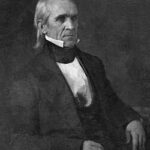The Historic Walker Tariff Decision
President James K. Polk signed the Walker Tariff into law on July 30, 1846. This legislation replaced the highly protectionist Tariff of 1842. The new tariff reduced average rates from 32% to approximately 25%. 📊 Government revenue remained stable while promoting international commerce.
Revolutionary Trade Policy Shift
The Walker Tariff represented a fundamental shift in American economic philosophy. Secretary of Treasury Robert J. Walker designed the legislation to prioritize revenue generation over industry protection. The tariff classified imports into schedules based on luxury versus necessity. Luxury items faced higher rates while necessities enjoyed lower duties. 💰 This approach reduced costs for ordinary consumers significantly.
Bipartisan Legislative Success
Polk’s administration achieved remarkable bipartisan support for the Walker Tariff. The legislation passed the House by a narrow margin of 114 to 95. Vice President George Dallas cast the tie-breaking Senate vote. Southern Democrats and Northern free-traders formed an unlikely coalition. ⚠️ Manufacturing interests initially opposed the reduced protections but eventually adapted successfully.
Impact:
Immediate Economic Transformation
The Walker Tariff implementation generated impressive economic results within months of enactment. Import volumes increased by 30% during the first year. 📈 Federal revenue actually rose despite lower tariff rates due to expanded trade volume. Consumer prices for imported goods dropped significantly across major cities.
International Trade Revolution
Foreign nations responded favorably to America’s reduced trade barriers. British merchants expanded commercial relationships with American importers. European luxury goods became accessible to middle-class consumers for the first time. 🌍 The tariff enhanced America’s reputation as a reliable trading partner globally. Agricultural exports also benefited from improved international relations.
Long-term Historical Legacy
The Walker Tariff established precedent for revenue-focused trade policy that lasted until the Civil War. Historians consistently praise Polk’s balanced approach to competing economic interests. The legislation demonstrated effective compromise between free-trade advocates and protectionists. 🔥 This tariff policy contributed to sustained economic growth throughout the late 1840s. Modern economists cite the Walker Tariff as an early example of successful trade liberalization.
